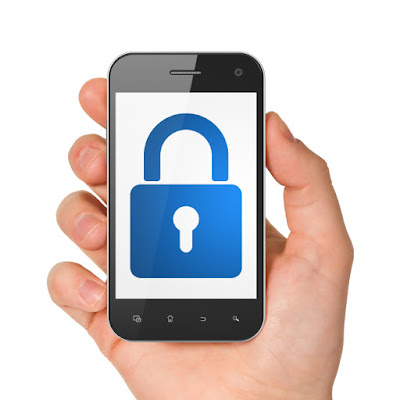If you've bought a new Android phone; have set it up with your Google account; down loaded a few apps such as WhatsApp, Instagram, Facebook and Twitter, and even logged in, your data is already at risk.
Indeed, for a device that carries so much of our digital identity, most of us are very casual in the way we handle our smartphones. Within half an hour of a phone getting stolen, lost or misplaced, identity thieves could change the password to all our e-mail and social networking services. With our handset in their possession, they have almost everything they need to keep us out of our own accounts.
And we're not even talking about the photo gallery, SMSes, instant messages, and banking PINs on the handset. To safeguard your Android smartphone...
>> Set up a lock screen : - -
The first step to blocking access to the information stored on your phone is to use a screen lock. To set this up, launch your device's Settings app, scroll down and tap Security.
On some phones, you will need to tap on Lock screen & password. Here, you can choose between options such as Pattern (lets you draw a simple pattern with your finger to unlock the device), PIN (usually a four-digit unlock code), Password (which allows for an alphanumeric password), and Fingerprint (if you own a handset with a fingerprint scanner). Of these options, we recommend either password or fingerprint unlock as these are harder to crack.
Once you have activated your device's screen lock, you have made it tougher for anyone who has access to your phone to view its contents.
>> Encrypt your device data... : --
For added security of your digital data, we suggest you use Android's Encrypt feature too. This option is usually found under Settings > Security. But in certain smartphones, this could also be found under Settings > Privacy. More often than not, manufacturers customize the user interface of the operating system running on their devices, so you might have to dig deep within the Settings app to find this option.
Encrypting your device will protect your account data, apps, music, photos and more. So even if your phone falls into the wrong hands, your data stays secure behind your PIN, pattern or password lock.
Please note: Always begin encrypting your phone's contents after you have fully charged its battery as this process is time consuming. If you interrupt the process, you could lose some or all of your data.
>> Set up Android Device Manager : --
If you haven't already, activate Android Device Manager on your phone. Like Encryption, this option is usually found under Settings > Security. But could also be found under Settings > Privacy. In any case, seek out the option and activate this feature. After you activate Android Device Manager, check to make sure that it's working properly by signing in to your Google Account on android.comdevicemanager.
The online dashboard will display your handset's location on a map, and will also give you the option to activate its ringer remotely to help you trace it if it is in your vicinity.
In case you have misplaced the device, you can also Lock its screen remotely with a new password. Android Device Manager also lets you send a message to the phone's lock screen, along with an alternative number people can call in case they have found your handset. And lastly, if all else fails, you can also remotely erase the device data so at least your digital identity is not compromised.
>> Set up remote access : --
Even after setting up Android Device Manager, you will not be able to locate, call or erase the data on your handset remotely if the thief has switched it off or replaced your SIM card. For a more robust solution, consider an app like Cerberus anti-theft.
This paid app prevents anybody from powering down your phone from the lockscreen, and it will send SMS alerts to an alternate number with your device's location, even after a SIM card change.
You can activate your phone's cameras via Cerberus' detailed web dashboard or with an SMS command (sent from any other phone) to snap the culprit. The app can also be configured to back up data to your Google Drive and Dropbox account remotely.
You can hide the app from being discovered and prevent it from being uninstalled from the phone as well. Cerberus is free to use for seven days, after which you need to pay as little as Rs 500 for an annual subscription.










Post a Comment